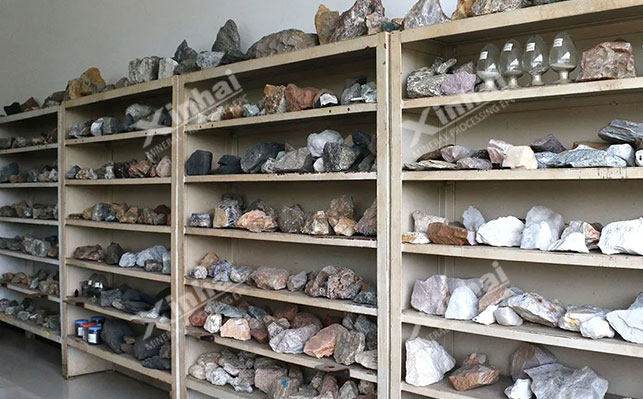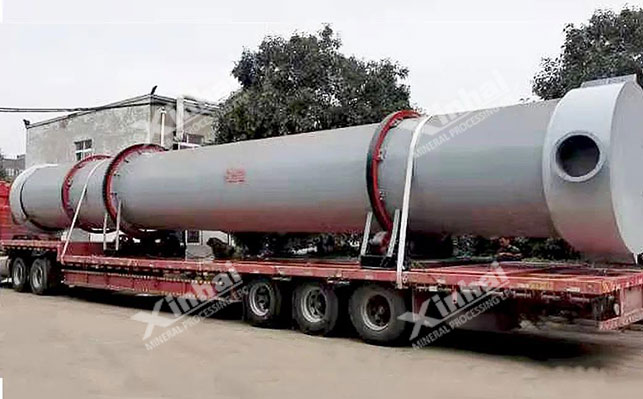Lateritic nickel ore is a clay-like ore formed by long-term weathering, leaching and deposition of nickel oxide deposit, containing iron, aluminum, silicon and other water-bearing oxides. Laterite nickel ore is divided into limonite layer, transition layer and humus layer according to the distribution of different ore layers. The smelting process applicable to laterite nickel ore of different ore layers is also different. In this paper, we will introduce the treatment methods of laterite nickel ore according to the different ore beds.

Laterite nickel ore in limonite layer mainly includes limonite, goethite, gibbsite, chromite, etc., often containing a certain amount of cobalt. Generally, this kind of laterite nickel ore is treated by wet process, mainly by high-pressure acid leaching process, and is suitable for sulfuric acid reaction in autoclave, which can comprehensively recover nickel, cobalt and other valuable metals. The reaction process is friendly to the environment. Because corrosion and scaling are easy to occur in the production process, the autoclave needs to be maintained regularly.
In addition, the alkaline leaching process is also used for lateritic nickel ore in limonite layer. This method is based on high concentration alkali metal or molten sodium hydroxide system, and uses carbonization decomposition method and ammonia leaching method to extract silicon, magnesium, nickel, and iron in order to realize the comprehensive utilization of lateritic nickel ore.
This layer of ore is located between limonite layer and humus layer, also known as clay zone or montmorillonite zone, containing montmorillonite, silica and a small amount of goethite. Nickel exists in montmorillonite and pyrolusite in the form of different oxides. The treatment processes for this type of laterite nickel ore mainly include atmospheric pressure acid leaching process, reduction roasting ammonia leaching process, and small blast furnace process.
The steps of atmospheric acid leaching include slurry preparation, nickel leaching, nickel precipitation recovery or purification. This process can realize the enrichment of nickel in laterite nickel ores. The use of organic acids has less environmental pollution, relatively low loss and cost, and low equipment maintenance costs.
The main processes of reduction roasting-ammonia leaching process include laterite nickel ore drying, reduction roasting, multistage countercurrent ammonia leaching, selective precipitation to obtain carbonate precipitation, and calcination to obtain nickel products. The process flow is relatively long, the reagent can be recycled, and the consumption is small. It can effectively and comprehensively recover nickel and cobalt.
The process of small blast furnace is mainly to produce medium-nickel iron with nickel content of 5%~8% in small blast furnace of less than 200 cubic meters, and to recover nickel and iron in laterite nickel ore. The product can be used as the primary raw material of stainless steel.

This layer of minerals is deeply buried, mainly including minerals such as silicon magnesium nickel ore, quartz, talc, serpentine, olivine, etc., with high nickel content, but uneven chemical composition and mineral composition. This kind of nickel ore is mainly recovered by reduction roasting - magnetic separation process, rotary kiln pre-reduction - electric furnace smelting process, reduction roasting - acid leaching process, hydrothermal method, etc.
The reduction roasting-magnetic separation process mainly includes two stages, the reduction of Fe-Ni oxide and the growth of Fe-Ni particles. The process uses reduction to promote the growth of metal particles and improve the problem of fine and uneven distribution of nickel-bearing minerals. Generally, pulverized coal is used as reducing agent to enrich nickel and iron in lateritic nickel ore, and reduce lateritic nickel ore to metallic iron and nickel at a temperature lower than the melting point of the ore, so as to effectively separate ferronickel alloy.
Rotary kiln pre-reduction - electric furnace smelting process mainly includes drying, calcination, pre-reduction and smelting processes. Laterite nickel ore contains a large amount of free water and combined water, which need to be removed by drying, calcination and other means. Under high temperature environment, nickel ore is reduced by reducing gas, and good nickel recovery rate can be obtained after smelting. This process is suitable for processing lateritic nickel ore with high nickel grade, but it cannot recover cobalt minerals.
The reduction roasting-acid leaching process is carried out under normal temperature, which can reduce the dissolution of iron. Nickel and cobalt enter the solution under acidic conditions, with high leaching rate and good selectivity. It is suitable for laterite nickel ore in humus soil with high nickel and cobalt content.
Hydrothermal method, also known as hydrothermal method, uses water as solvent to conduct chemical reaction under high temperature and elegant conditions in closed pressure vessels. According to different types of reaction, it can also be divided into hydrothermal oxidation, hydrothermal reduction, hydrothermal precipitation, hydrothermal synthesis, hydrothermal hydrolysis, hydrothermal crystallization, etc. Among them, hydrothermal crystallization is common and can be used to treat humus laterite nickel ore.
The above is the treatment method of laterite nickel ore in different ore layers. In actual production, the nature of raw ore changes with the mining limit, which needs to be considered according to the actual situation. Therefore, the editor suggested that before the construction of the concentrator, the process plan of the concentrator should be scientifically and reasonably formulated by means of beneficiation test and design to achieve ideal economic benefits.